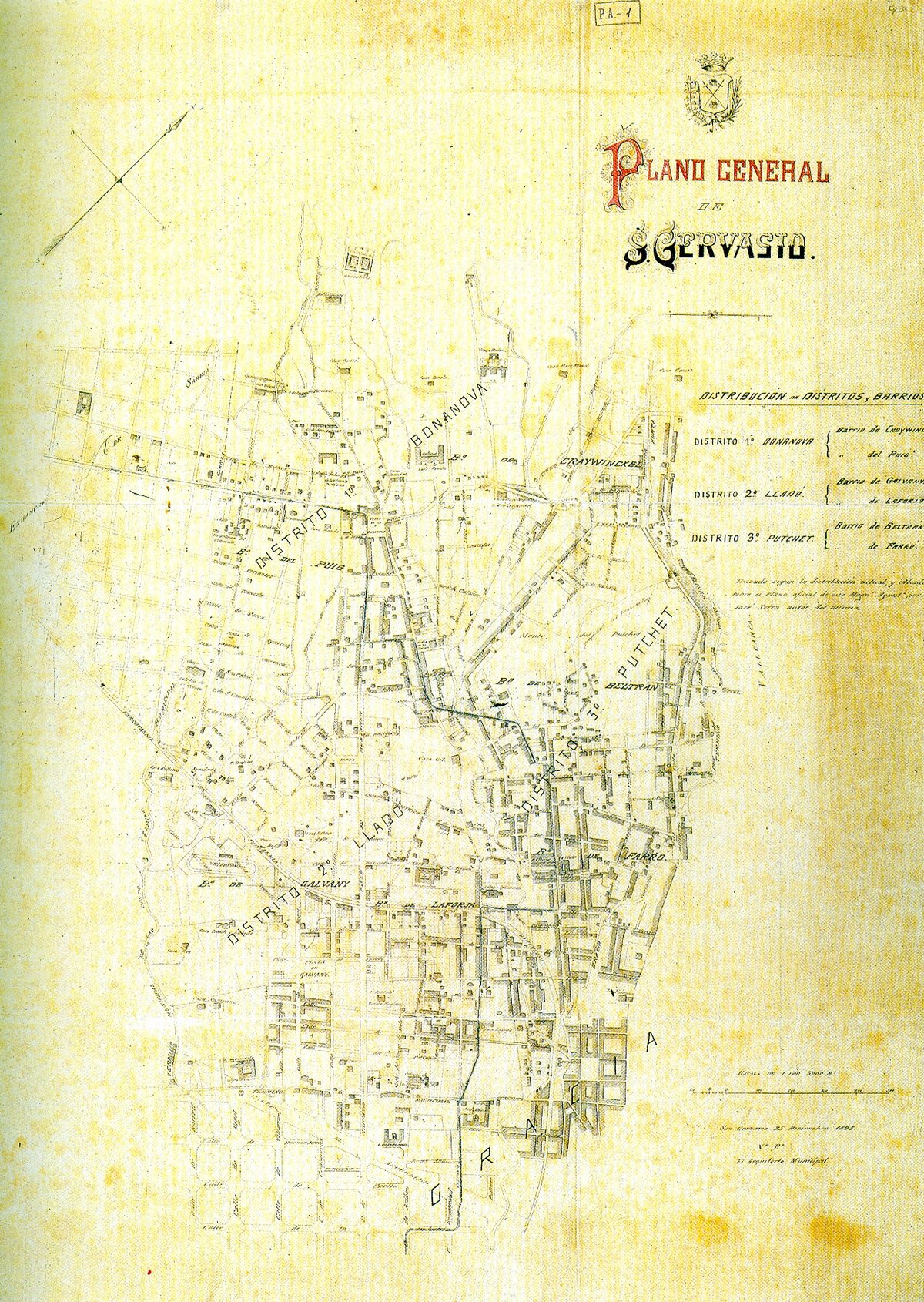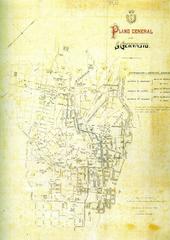
Comprehensive Guide to Visiting Santa Maria del Collserola, Barcelona, Spain
Date: 01/08/2024
Introduction
Nestled within the lush expanse of Collserola Natural Park, the Santa Maria del Collserola church stands as a testament to Barcelona’s rich history and cultural heritage. This Gothic architectural marvel, with its pointed arches and ribbed vaults, offers visitors a glimpse into the medieval period’s architectural advancements. The church is not only a place of worship but also a vital cultural hub for the local community, hosting annual festivals and religious ceremonies that attract visitors from far and wide. Santa Maria del Collserola is easily accessible from Barcelona, making it a convenient and enriching destination for both tourists and locals. (Collserola Natural Park)
The church’s significance extends beyond its religious and cultural importance; it is also a key feature within the Collserola Natural Park, which spans over 8,000 hectares and is home to a diverse range of flora and fauna. This natural sanctuary offers a variety of walking and hiking trails, wildlife watching opportunities, and other recreational activities, making it a haven for nature enthusiasts. With its rich biodiversity and historical landmarks, Collserola Natural Park provides a comprehensive and fulfilling experience for all visitors. (Parc Natural de la Serra de Collserola)
Table of Contents
- History and Significance of Santa Maria del Collserola
- Visitor Experience
- Nearby Attractions
- Ecological Significance of Collserola Natural Park
- Travel Tips
- FAQ
History and Significance of Santa Maria del Collserola
Historical Background
Santa Maria del Collserola, nestled within the expansive Collserola Natural Park, has a rich history that dates back to ancient times. The park itself, named after the Latin phrase “Collis Cereoli” meaning “Hill of Cereus,” has been a witness to various human settlements, from ancient Iberian tribes to medieval hermitages. The church of Santa Maria is one of the significant historical landmarks within this park, reflecting the deep-rooted religious and cultural heritage of the region.
Architectural Significance
The architectural style of Santa Maria del Collserola is a testament to the Gothic influences that permeated the region during the medieval period. The church’s structure, characterized by its pointed arches, ribbed vaults, and flying buttresses, is a classic example of Gothic architecture. This style not only adds to the aesthetic appeal of the church but also signifies the architectural advancements of the era.
Cultural Importance
Santa Maria del Collserola holds immense cultural significance for the local community. It has been a center for religious activities and community gatherings for centuries. The church is not just a place of worship but also a symbol of the cultural identity of the people living in and around the Collserola region. The annual festivals and religious ceremonies held here attract visitors from all over, adding to the cultural vibrancy of the area.
Preservation Efforts
In 1987, the Collserola Natural Park was designated as a protected area to preserve its ecological and historical significance. This designation has played a crucial role in the preservation of Santa Maria del Collserola. The park authorities have undertaken various initiatives to maintain the church and its surroundings, ensuring that this historical monument remains intact for future generations.
Visitor Experience
Visiting Hours and Ticket Information
Santa Maria del Collserola is open to visitors from 9:00 AM to 6:00 PM daily. Admission is free, but donations are welcome to support the preservation efforts. Special guided tours are available for a nominal fee, which can be booked through the Collserola Information Centre.
Accessibility
Santa Maria del Collserola is conveniently accessible from Barcelona. Visitors can take the Ferrocarrils de la Generalitat de Catalunya (FGC) S1 or S2 train lines, which connect directly to park entrances like Vallvidrera, Les Planes, or Baixador de Vallvidrera. The FGC stations are well-connected to the city’s metro system, making it a seamless journey. For those who prefer to drive, the church is accessible via the B-20 highway, with parking facilities available at various points around the park.
Guided Tours and Activities
The Collserola Information Centre offers guided tours and nature trails that include a visit to Santa Maria del Collserola. These tours provide an in-depth understanding of the church’s history and significance, along with insights into the park’s diverse flora and fauna. The center also organizes stargazing nights, combining theoretical explanations with practical observations of the night sky, adding a unique dimension to the visitor experience.
Nearby Attractions
In addition to Santa Maria del Collserola, visitors can explore other historical landmarks within the park. The Sant Medir Hermitage, the Gothic castles of Castellciuró and El Papiol, and the famous Vil·la Joana are some of the notable attractions. These sites offer a glimpse into the rich historical and cultural tapestry of the region, making a visit to Collserola Natural Park a comprehensive and fulfilling experience.
Ecological Significance of Collserola Natural Park
Flora
The dominant vegetation in Collserola is Mediterranean forest, primarily composed of holm oaks (Quercus ilex) and Aleppo pines (Pinus halepensis). These species are well-adapted to the region’s dry, hot summers and mild, wet winters. The holm oak forests are particularly notable for their dense, evergreen foliage, which provides a year-round canopy. Other trees and shrubs, such as cork oaks (Quercus suber) and stone pines (Pinus pinea), contribute to the park’s rich biodiversity.
Fauna
Collserola is home to a diverse array of mammal species, including wild boars (Sus scrofa), red foxes (Vulpes vulpes), and European badgers (Meles meles). Birdwatchers will find the park a paradise, with over 200 species recorded, including the Eurasian jay (Garrulus glandarius) and the common buzzard (Buteo buteo). Reptiles and amphibians, such as the ocellated lizard (Timon lepidus) and the common toad (Bufo bufo), are also commonly found.
Conservation Challenges
Maintaining the ecological balance of the park while preserving its historical landmarks poses significant challenges. The park authorities have implemented various conservation measures to address these challenges. These include habitat restoration projects, wildlife monitoring programs, and community awareness initiatives. The goal is to ensure that the park’s natural and historical treasures are preserved for future generations while providing a sustainable and enjoyable experience for visitors.
Travel Tips
- Best Time to Visit: The best time to visit Santa Maria del Collserola is during the spring and autumn months when the weather is pleasant, and the park’s flora is in full bloom.
- What to Wear: Comfortable walking shoes and weather-appropriate clothing are recommended, as the visit involves hiking through the park.
- Respect the Environment: Visitors are encouraged to respect the natural environment by following designated trails, not disturbing wildlife, and disposing of waste responsibly.
FAQ
- What are the visiting hours of Santa Maria del Collserola? Santa Maria del Collserola is open from 9:00 AM to 6:00 PM daily.
- How do I get tickets for Santa Maria del Collserola? Admission is free, but donations are welcome. Special guided tours can be booked through the Collserola Information Centre.
- What is the best way to reach Santa Maria del Collserola? The most convenient way is by taking the FGC S1 or S2 train lines to Vallvidrera, Les Planes, or Baixador de Vallvidrera stations.
- Are there any special events at Santa Maria del Collserola? Yes, the church hosts annual festivals and religious ceremonies that attract visitors from all over.
- Is photography allowed at Santa Maria del Collserola? Yes, photography is allowed, and the panoramic views make it an excellent spot for capturing beautiful moments.
Conclusion
Santa Maria del Collserola is a historical gem nestled within the lush greenery of Collserola Natural Park. Its rich history, architectural beauty, and cultural significance make it a must-visit destination for anyone exploring Barcelona. The park’s accessibility, combined with the various guided tours and activities, ensures that visitors have a memorable and enriching experience. By respecting the environment and engaging in sustainable tourism practices, visitors can help ensure that this historical and natural treasure remains intact for future generations to enjoy.
References
- Collserola Natural Park, 2024, Wikivoyage Collserola Natural Park
- Parc Natural de la Serra de Collserola, 2024, Things to Do in Barcelona Parc Natural de la Serra de Collserola
- Collserola Information Centre, 2024, Barcelona Turisme Collserola Information Centre






























































